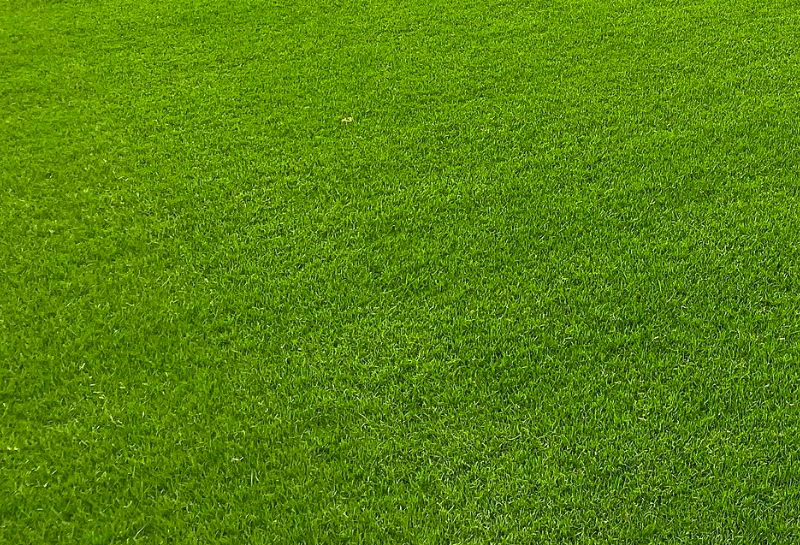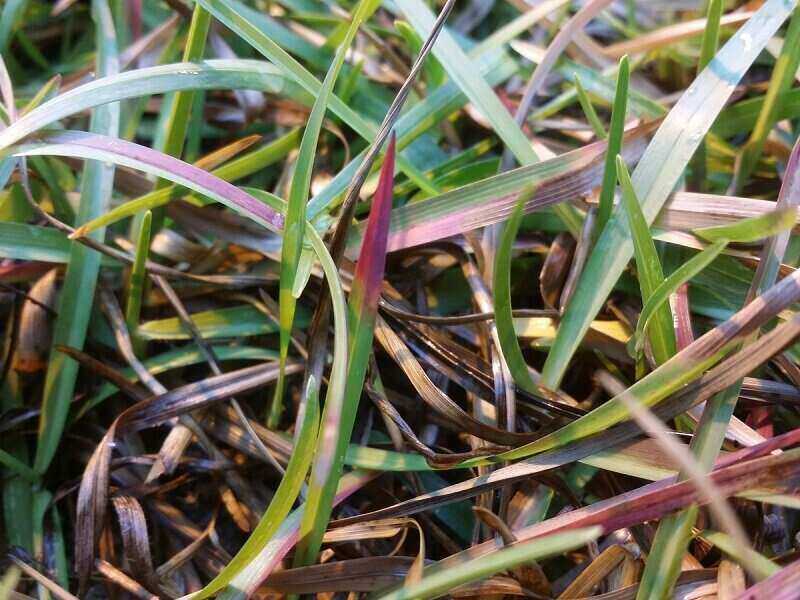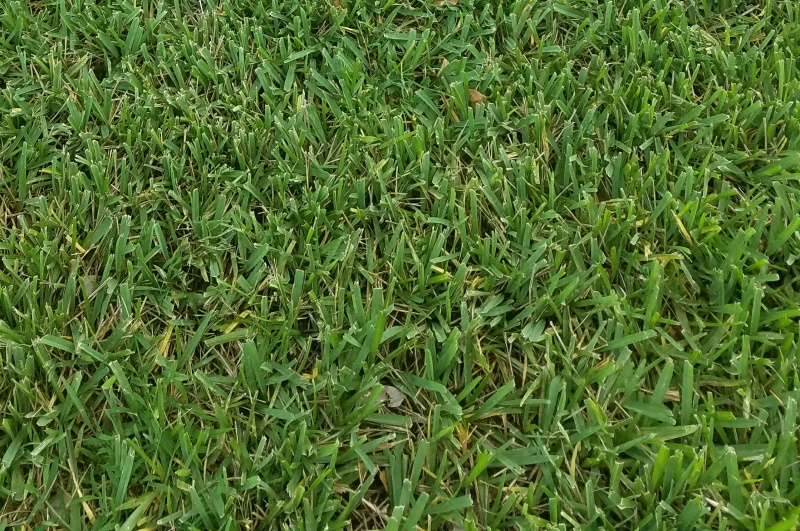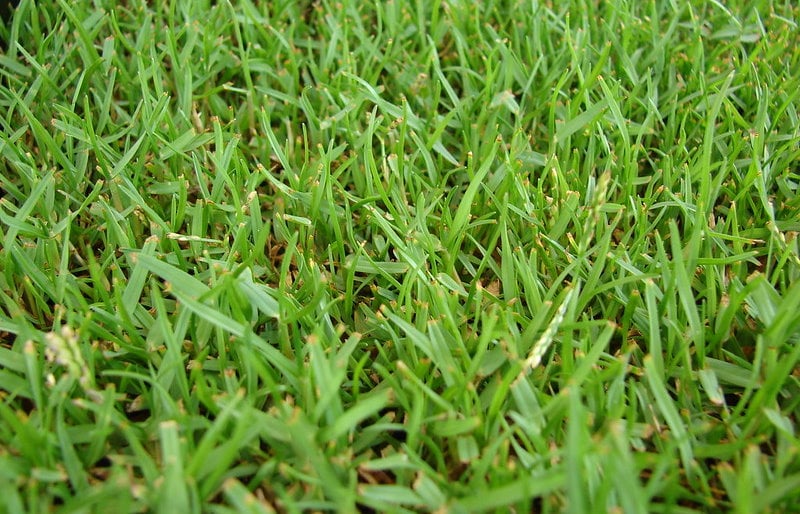
Virginia is for grass lovers, but which grass is best for your Richmond lawn? Your options include:
- Tall fescue
- Kentucky bluegrass
- Fine-leaf fescues
- Perennial ryegrass
- Bermudagrass
- Centipedegrass
- St. Augustinegrass
- Zoysiagrass
Richmond is in the transition zone, meaning you have cold winters and hot summers. These cool- and warm-season grasses make the best of a challenging climate. Don’t let the number of choices overwhelm you. With a multitude of options, you can weigh the risks and benefits to make the best choice for your yard.
Which grass type is best for my Richmond lawn?
Both cool and warm-season grasses are planted here, but neither type of grass is perfectly adapted to local conditions. This means anyone who has a beautiful lawn puts in considerable effort to keep it healthy. Richmond is also on the edge of the Piedmont and Coastal Plain (also known as Tidewater) regions of Virginia where it’s notoriously difficult for either cool-season or warm-season grasses to thrive year-round due to the hot summers and cold winters.
Don’t get discouraged just yet. Let’s dig into the details to discover which grass, or combination of grasses, will suit your lawn best.
Cool-season grasses
With cool-season grasses, you’ll likely have the best chance of success if you combine more than one grass type or multiple varieties of the same type in your lawn. This allows for greater genetic diversity and resilience, which is very important in a transition zone lawn.
As a reminder, cool-season grasses have two periods of growth: once in the late summer through fall and again in late winter through spring. These grasses typically go dormant (brown) during the hot summer months and are more prone to disease and insect pressure during this time.
Since summer is a stressful time for cool-season grasses, be sure to keep watering deeply and limit foot traffic on the lawn, as this adds to its stress level. So, if you have summer backyard get-togethers or kids and pets who play on the lawn, seek expert advice before planting cool-season grass.
1. Tall fescue

Ty Haller | Flickr | CC BY-SA 2.0
If there is one grass that is common state-wide, it’s tall fescue. Although this cool-season grass works best in the cooler regions of the southwest, northern Virginia, and the Shenandoah Valley, it is still the most popular lawn grass in eastern Virginia.
Tall fescue lawns have low to moderate maintenance requirements and are very tolerant of drought due to their ability to find water deep in the ground.
- Classification: Cool-season grass
- Spreads by: Most are bunching; some have rhizomes
- Shade tolerance: Moderate
- Drought tolerance: High, due to its extensive root system
- Foot traffic tolerance: High
- Maintenance needs: Add 2-4 pounds of nitrogen per 1,000 square feet per year
- Recommended mowing height: 2-3 inches or taller in summer
Grass Seed Options:
– Triple-Play Tall Fescue Grass Seed Blend (5000 sq ft)
– Eretz Kentucky 31 K31 Tall Fescue Grass Seed (choose your size)
– Pennington The Rebels Tall Fescue Grass Seed Mix (7 lb.)
2. Kentucky bluegrass

Brenda Ryan | Lawn Love
Kentucky bluegrass is a popular cool-season grass. As long as it is properly cared for and has ideal growing conditions, it produces a classic, dark green lawn, but this “ideal lawn” look comes at a price. Kentucky bluegrass is a medium- to high-maintenance lawn, requiring regular watering and fertilization to stave off many common diseases such as rust, dollar spot, and red thread. This grass, on its own, struggles in warmer climates, so you may want to consider a mix with tall fescue or a tall fescue/hybrid bluegrass mix.
- Classification: Cool-season grass
- Spreads by: Rhizomes
- Shade tolerance: Low
- Drought tolerance: Moderate to high*
- Foot traffic tolerance: Moderate
- Maintenance needs: *Although Kentucky bluegrass goes dormant quickly without regular watering, its rhizomes help it survive and recover when consistent watering resumes. It’s very important to fertilize at 3-4 pounds of nitrogen per 1,000 square feet per year to help prevent common diseases such as red thread, rust, and dollar spot. It will likely develop thatch over time and need to have the excess thatch removed.
- Recommended mowing height: 1.5-2.5 inches
Grass Seed Options:
– Jonathan Green (11970) Blue Panther Kentucky Bluegrass Grass Seed (3 lbs.)
– SeedRanch Midnight Kentucky Bluegrass Seed (5 lbs.)
– Jacklin Seed – Biltmore Blue Blend – 100% Kentucky Bluegrass (5 lbs.)
3. Fine-leaf fescues

Matt Lavin | Flickr | CC BY-SA 2.0
Fine-leaf fescues comprise several species of fine-bladed grasses, including creeping red fescue, hard fescue, and chewing’s fescue, to name a few. These grasses, on their own, make a great low-maintenance lawn in the Valley and Ridge region but are not recommended as stand-alone grass in a warmer climate like Richmond.
In warmer locations, fine fescues work better in combination with other grass species. Fine fescues are often the shade component in sun/shade grass seed mixes with Kentucky bluegrass cultivars.
Fine fescues have a few downsides: They do not take foot traffic well and are moderately slow to establish, although they germinate in just 10-14 days.
- Classification: Cool-season grass
- Spreads by: Creeping red fescue has short rhizomes, but the other varieties are bunching grasses.
- Shade tolerance: Moderate
- Drought tolerance: High
- Foot traffic tolerance: Low
- Maintenance needs: These grasses have a low fertilization requirement of just 1-2 pounds of nitrogen per 1,000 square feet per year. Fine fescues require well-drained soil.
- Recommended mowing height: 1.5-2.5 inches or taller in a home or low-maintenance setting
Grass Seed Options:
– Outsidepride Legacy Fine Fescue Grass Seed (5 lbs.)
– Eretz Creeping Red Fine Fescue Seed (choose your size)
– Outsidepride Creeping Red Fine Fescue Grass Seed (25 lbs.)
– Outsidepride Hard Fine Fescue Grass Seed (10 lbs.)

iStock
4. Perennial ryegrass
Perennial ryegrass is on this list as a special case. This grass is often included in grass mixes with Kentucky bluegrass and fine fescue in cooler parts of the state. It is sometimes planted by itself in the Valley and Ridge region at high elevations. In warmer regions of Virginia, where Richmond is located, perennial ryegrass is used to overseed warm-season grasses in the winter.
In the 1990s, gray leaf spot took hold in many perennial ryegrass lawns, so this grass became less popular with homeowners. In recent years, varieties with better gray leaf spot resistance have come on the market. If you do select perennial ryegrass to overseed your Richmond lawn, do your research to select a variety that is resistant to this disease.
Pro Tip: If you prefer a lower-maintenance alternative to overseeding, you can always paint the grass instead.
- Classification: Cool-season grass
- Spreads by: Perennial ryegrass is a bunching grass that does not have stolons or rhizomes.
- Shade tolerance: Moderate
- Drought tolerance: Low
- Foot traffic tolerance: High
- Maintenance needs: If you are overseeding warm-season grass, this will require a moderate to high level of effort to prepare the soil, overseed, water, and then manage the transition from ryegrass to warm-season grass in the spring.
- Recommended mowing height: 1-2.5 inches
Grass Seed Options:
– Outsidepride Perennial Ryegrass Seed (5 lbs.)
– Eretz ProTurf Perennial Ryegrass Fine Lawn Seed (choose your size)
Warm-season grasses
Warm-season grasses are usually seeded or sodded as individual cultivars, unlike cool-season varieties that are usually sold as blends or mixes.
5. Bermudagrass

Gilba Solutions Pty Ltd | Wikimedia Commons | CC BY-SA 4.0
Bermudagrass is a popular warm-season grass, especially in the southern parts of the country. If it invades another lawn, however, it is considered a highly invasive weed – FYI.
On a positive note, this aggressive growth characteristic gives it an excellent ability to recover from your weekly backyard soccer matches. If you decide on this grass, you’ll need to install metal or concrete edging around flower beds to a depth of about two inches to discourage the rhizomes from tunneling.
Finally, be sure to do your research and select a cold-tolerant variety.
- Classification: Warm-season grass
- Spreads by: Rhizomes and stolons
- Shade tolerance: Low
- Drought tolerance: Moderate
- Foot traffic tolerance: High
- Maintenance needs: Requires 2-4 pounds of nitrogen per 1,000 sq. ft. per year. It will likely require regular dethatching.
- Recommended mowing height: 0.5-2.5 inches
Grass Seed Options:
– Pennington Bermudagrass Bare Spot (5 lb. bag)
– Pennington Smart Seed Bermudagrass Mix (8.75-lb. bag)
– Scotts Turf Builder Bermudagrass (10-lb. bag)
– Hancock Seed Co. Bermudagrass (50-lb. bag)
6. Centipedegrass

Pxhere
Centipedegrass is only suited for the Tidewater (or Coastal Plain) region. Since Richmond is close to the border, you may find centipedegrass in Richmond. It has a greenish-yellow color and grows slowly, which is a bonus for homeowners who want a low-maintenance lawn.
- Classification: Warm-season grass
- Spreads by: Stolons
- Shade tolerance: Moderate
- Drought tolerance: Moderate
- Foot traffic tolerance: Low
- Maintenance needs: Centipedegrass has a low fertilization requirement of 1-2 pounds of nitrogen per 1,000 square feet per year.
- Recommended mowing height: 1.5-2.5 inches
Grass Seed Options:
– Gulf Kist Coated Centipedegrass Seeds (1 lb.)
– Scotts EZ Seed Patch and Repair Centipedegrass (3.75 lbs.)
– TifBlair Centipedegrass (5-lb. bag)
– Pennington Centipedegrass and Mulch (5-lb. bag)
7. St. Augustinegrass

Michelle Selzer | Lawn Love
St. Augustinegrass, along with centipedegrass, is only suited for the Coastal Plain (also called Tidewater) region of Virginia. So, depending on where you live, it may be a good fit for your Richmond lawn. St. Augustinegrass can be established via sod or plugs and forms a dense turf once established.
A few downsides are that St. Augustinegrass can be susceptible to insects and disease and lacks a high tolerance for cold.
- Classification: Warm-season grass
- Spreads by: Stolons
- Shade tolerance: High
- Drought tolerance: Moderate
- Foot traffic tolerance: Low
- Maintenance needs: Plan to use 2-4 pound of nitrogen per 1,000 square feet per year.
- Recommended mowing height: 2-3 inches
Grass Plug Options:
– Seed Ranch St Augustine Seville Grass Plugs (2 Trays)
– Seed Ranch St Augustine Floratam Grass Plugs (2 Trays)
8. Zoysiagrass

Forest and Kim Starr | Flickr | CC BY-SA 2.0
Zoysiagrass gets high marks for cold hardiness and is a great choice for a low-maintenance lawn. It is very slow to establish, but once it reaches maturity, it produces a very dense stand of grass, which is great for weed control.
Bermudagrass gets higher marks for drought tolerance, but both bermuda and Zoysia require less water than cool-season species.
- Classification: Warm-season grass
- Spreads by: Rhizomes and stolons
- Shade tolerance: Moderate
- Drought tolerance: High
- Foot traffic tolerance: High
- Maintenance needs: Sharpen your mower blade regularly for the best quality cut. Fertilize with 1-2 pounds of nitrogen per 1,000 square feet per year.
- Recommended mowing height: 1-2.5 inches
Grass Plug and Seed Options:
– Zoysia Plugs (50 Large Grass Plugs)
– Zoysia Plugs (50 Full & Lush Grass Plugs)
– Zoysia Plugs (100 Plugs)
– Zoysia Emerald Grass Seeds (1/8 lb. of seeds)
– Zenith Zenith Grass Seeds (1/8 lb. of seeds)
Remember, in the transition zone, no grass is perfect. But if you follow these tips and choose the species (or a mix) that suits your lawn, you will minimize your losses and be armed with the information to care for your new grass year-round.
How to select the best grass type for your Richmond lawn
Before you run to the home improvement store, you’ll want to consider the following questions:
- Does your lawn get full sun, or do you have shady patches?
- Kentucky bluegrass and bermudagrass prefer full sun. St. Augustine prefers mostly sun but tolerates some shade better than the other warm-season grasses. The other grasses can tolerate light shade.
- Do you prefer a high-maintenance lawn or something very low maintenance?
- Remember, all lawns in the transition zone will struggle on occasion. Overall, centipede is the lowest maintenance grass and Kentucky bluegrass is one of the highest.
- Is your area subject to drought?
- Perennial ryegrass doesn’t get high marks for drought resistance, but every other grass on the list does well or very well in this category.
- Does your lawn have significant foot traffic?
- Tall fescue, perennial ryegrass, bermuda, and Zoysia tolerate high levels of foot traffic. Fine leaf fescues, centipedegrass, and St. Augustine only tolerate low levels of foot traffic.
Keeping these questions in mind will help you select the best grass for your lawn’s specific conditions.
If you’re not a grass lover, let one of our Richmond lawn care professionals mow, edge, prune, and plant a healthy lawn for your and your family to enjoy. You just might fall in love with your Richmond lawn after all.
Main Photo Credit: Ron Cogswell | Wikimedia Commons | CC BY 2.0
Lawn Love participates in the Amazon Services LLC Associates Program, an affiliate advertising program. Lawn Love may earn revenue from products promoted in this article.